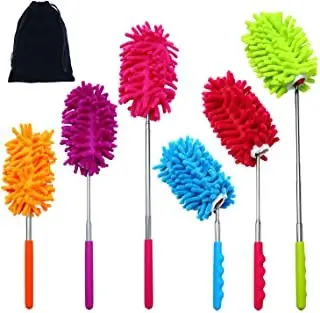Everyone loves their kitchen clean. However, dust is one of the many aspects we regularly battle due to its recurrent nature.
Dirt is unhygienic, deteriorates the home’s quality, can cause allergic reactions to those with dust allergies, and can finally affect your health, to be precise, the respiratory system.
Dusting a place is not an annual or monthly affair; rather, it should be a regular job as dust is never-ending.
The amount of dust in your home depends on several factors such as;
- Immediate environment
- Season of the year
- Number of people in the house
- Pets
- How often/ how you clean
Importance of dusting
No matter what you do to prevent dust, it will not stop gathering throughout your kitchen and home. Most people quit trying to control dust and only dust when it begins to get too much.
Unluckily, dust accumulation will cause more damage than you think. It is unpleasant, as well.
No matter how boring or tedious you think regular dusting is, there is no doubt that dusting is important and you should feel compelled to do it for the following reasons:
1.Healthier surroundings
When dust gathers on the countertops, shelves, cupboards, and other surfaces, you and your loved ones will inhale it.
To worsen the matter, dust may easily get into the Heating, Ventilation and Air Conditioning (HVAC) and spread throughout the kitchen and the entire house.
This will mean that everybody residing in your house is more prone to sickness, dry eyes, and breathing problems. That is right; dust is able to spread pollutants that cause specific sicknesses.
Additionally, lots of dust will cause asthma or allergies. This is true when allergens from outside make their way into your kitchen and become dust.
If you allow dust build up on kitchen surfaces, it will get on your hands and other kitchen items as well. Before long, the kitchen is downright unhygienic.
2. Protecting the HVAC system
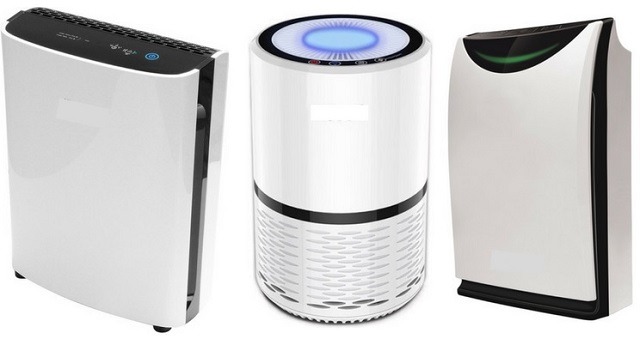
One of the essential rules for HVAC system maintenance is keeping it clean and dust free. You can do this by changing the air filter regularly.
But if you have an inflow of dust getting into the system, other components can ultimately become dirty.
This can result in malfunctions needing expensive repairs. Your system will also not keep your house as comfy if it is covered in dust.
In addition, if the unwanted dust gets uncontrollable, the unit will have to work harder. Not only will it be bad for the HVAC, but it will also increase your monthly energy bills.
If you have invested in one of the best air purification appliances, keeping it clean and dust free will ensure it gives you the results you were hoping for when you bought it.
3. A good-looking kitchen
Dusting regularly will help make your kitchen feel and look better. This will create a much comfier atmosphere that you and your loved ones can unwind in.
Remember to focus on difficult to reach areas such as the top of shelves and inside top cabinets. You will be shocked to see how much dust can buildup.
Not letting dust accumulate at the start can make clean up a lot easier. You can then enjoy a beautiful kitchen and home without the need to toil the entire day.
Prioritize dusting
It is difficult to ensure your home stays free of dust. But if it’s done well, dusting can offer a healthier house in which you and your loved ones will be happy to stay in.
How to get rid of dust in the kitchen
The key thing to note before you begin the dusting process is what materials to avoid. For example, the use of feather dusters is not advisable by a number of cleaning experts.
This is because the dusters spread dust from one area to another instead of removing it. The recommended materials for dusting are;
- Wet soft cloth
- Electrostatic duster
- Microfiber duster
Dry or wet mop?
Damp mops can clean up better than dry mops; however, water is hard on a few surfaces, like wood. A microfiber mop is available in both wet and dry varieties.
Duster or dust cloth?
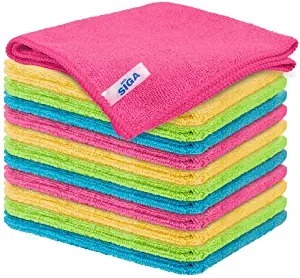
Rather than use a mod feather duster or an old T-shirt, use an electrostatic or microfiber cloth to capture the dust, not just moving it around. It will attract dust fast.
The good thing is when you finish dusting with the microfiber cloth, you simply toss it in your washer, allow it to air dry, and use it once more.
A microfiber duster with strips or loops of microfiber to trap more dust is also available in different lengths and shapes.
A damp microfiber cloth is a superb cleaner; a kitchen countertop will emerge streak and free of dirt without any cleanup agent.
If you do not have access to a microfiber cloth, dampen whichever cloth you are using before you start dusting.
Sweep it away
Do not ignore your broom. If you have tile floors in your kitchen that have irregular surfaces, a synthetic-bristle broom is the best option as it will reach corners and pick up tiny particles compared to natural-fiber brooms.
With all your tools ready, you can start dusting the culprit areas in your kitchen.
Procedure for dusting
Always start from the top going downwards to avoid returning dust on surfaces you’ve already cleaned.
Dust in either an anticlockwise or clockwise manner for comprehensive cleaning, leaving no area unattended.
Walls
For any decor on the walls or any material or equipment on the wall, it is best to dust behind its surface with a microfiber duster.
From the ceiling and the walls, dust using a vacuum that has several attachments. For efficient results, as stated, start your cleaning from the top moving wayward.
Countertop
It is a general rule when dusting that you should pay special attention to all the horizontal surfaces.
With that in mind, for the countertop, first, sweep off the food crumbs, and using a soft wet cloth, wipe the surface with a mild cleanser.
Further, use a damp cloth for rinsing the surface and a clean cloth for drying it. Air drying may attract more dust particles, which tend to stick on the wet surface.
Cabinets
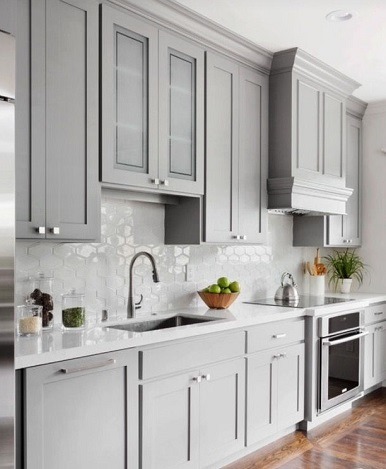
If dust is trapped on small nooks and other hard-to-reach spots, use a small paint or make-up brush and afterward wipe with a microfiber cloth.
Electronics
Before dusting or cleaning any electronic gadget, unplug it from the main power source.
These electronics include refrigerators, microwaves, oven, and stoves, etc. Gently wipe the gadgets using a microfiber cloth. A soft bristle brush with a long handle is effective to access the crevices.
Furthermore, dust the vents and cords because dust or pet hair accumulation can clog the machines and outlets.
Behind appliances
As time goes by, dust, grease, and other debris pile up behind appliances such as the refrigerator and the stove, attracting pests and other insects.
Unplug the gadgets and move the appliances from the wall to create ample space for dusting. Clean the back of the appliance with a wet sponge.
For the floor under or behind the appliances, mop with warm soapy water and rinse to eliminate the gathered dirt.
Ceiling fans
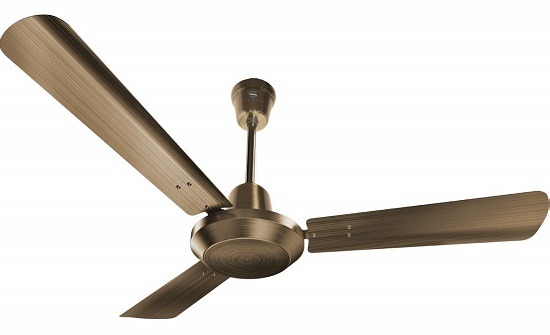
Below the ceiling fan, place a newspaper or cloth to collect the dirt. Turn off the fan power source. You can reach the fan using a stool or small ladder.
Use a wet cloth to wipe off greasy dust from the casing. To loosen the dust on the blades, use a soft bristle brush with a mild cleanser. Afterward, rinse with a damp paper towel.
Vents
For vents in any area or appliance, wipe the dust with a soft brush vacuum attachment or an electrostatic mop. Afterward, wipe the surface using a microfiber cloth.
For removable air-conditioning filters, dip them in warm soapy water and then air dry and reinstall it.
Door frames and window frame
Sweep the dirt off the window frame using a brush. Vacuum the window frame to eliminate any remnant dirt. If your window looks dull, clean it with warm soapy water and a soft brush.
You can wipe both sides with a microfiber duster for the blinds and shades or rubbing a wet cloth through each one of them and after dry with a clean cloth.
For the doors, use a wet cloth with a mild cleanser to wipe the doors together with the handles and grooves. Dry the surfaces with a microfiber duster.
Kitchen floor
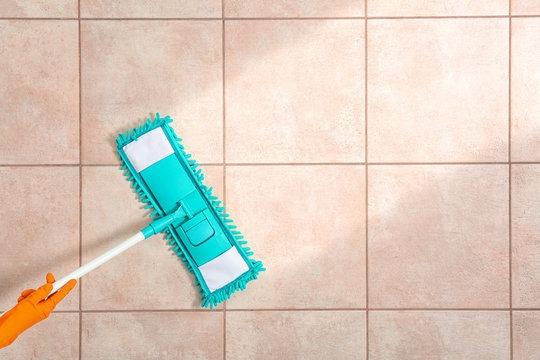
The kitchen floor is one of the major culprits in the accumulation of dust. To get rid of dust from the floor, sweep off all the food crumbs and dirt off the floor.
Vacuum the floor to get rid of any excess dirt. You can further use an electrostatic mop to clean the kitchen floor.
Baseboards
For the dirty spots use a wet cloth. Spray some water and a cleaning solution on the cloth; rub on the baseboard to get the dirt off instantly.
Tips to minimize dust
Kitchen curtains, cloths, and mats
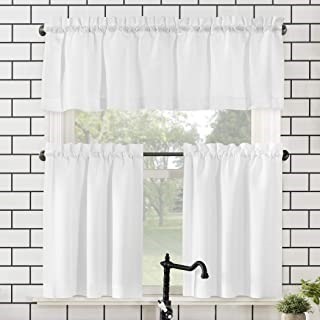
Wash the kitchen curtains and linens regularly. The outside environment is full of dust; hence opening the window causes dust to settle on the curtains.
Hang kitchen cloths are no exception. Failure to wash them may lead to health issues caused by poor hygiene.
For the kitchen mats, they tend to accumulate dirt quickly hence the need for regular replacement.
Regular dusting of electrical appliances
Dust tends to settle on surfaces, and kitchen electrical appliances are not excluded. Dusting them often will minimize the dust in your home as well as keep your appliances operating perfectly.
Clean your floor
Sweep and vacuum your floor on a regular basis. This reduces the accumulation of dust that may blow to other areas of the kitchen, including your food.
Good organization of your kitchen
If your kitchen is well organized, then chances of dust accumulation are minimal compared to a cluttered kitchen.
Good air circulation
Opening the windows for circulation of air can have dust stay in the atmosphere for long before settling. Switching on the fan gives it no other option than to blow outside.
Constant change air filter
During the functioning of the air filters, they tend to trap and accumulate dust and dirt.
Constantly switching them on prevents the accumulation of dust, making your surrounding air fresh and dust-free.
Quick dusting tips
Dusting in the right direction:
Dust falls from the top to the bottom. So, when you are dusting your kitchen, begin with the highest situated things and continue down to the lowest. If you do not, you will have to repeat the work.
Another great thing to remember is working in a circular formation; working clockwise deals with all moldings and four corners.
After that, move down and dust all frames at the top (art and doors, etc.) and then lower once more to dust the countertop and, lastly, all baseboards.
Finally, vacuum the kitchen floor. By doing this, no dust is going to fall on an already cleaned up place.
Using microfiber cloths:
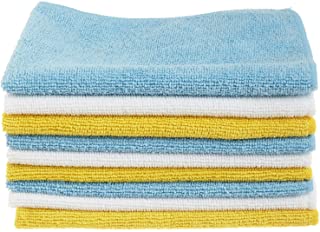
A microfiber cloth will help you spend less time cleaning up your kitchen. These clothes are electrostatically charged, which means they attract dust fast.
In addition, microfiber is also highly porous, and it does not leave dust or lint behind, meaning a free of streak surface. In brief, it will save you time by helping you clean up your kitchen more efficiently.
Cleaning up the ducts and replacing air filters:
These are the greatest source of allergens and dust in your house, particularly after any renovation.
If you have not been replacing the air filters every season, you are causing more dust to enter your house.
The ultimate form of dusting is cleaning up the air ducts. You can work with an expert who will help vacuum all the vents outs, getting rid of your home’s residual dust.
Dusting hard to see or delicate areas:
Use a pantyhose covered dust brush to vacuum these spaces. The nozzle will pick up dust with a dust brush without sucking up items or valuables you do not want to be vacuumed up.
Conclusion
It may be difficult to completely eradicate the dust from your kitchen because dust is part of the air.
However, you can regularly dust your kitchen with the tips provided and follow the tips to minimize the accumulation of dust in your kitchen.

